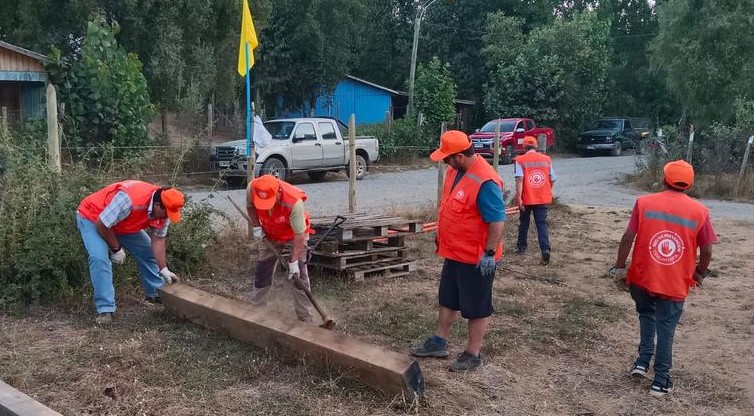Farmers from Biobío and Ñuble restore their lands thanks to the use of agroforestry systems
The Forestry Institute (Infor) and the Agricultural Development Institute (Indap) are implementing a project to recover areas affected by the mega-fires in the Biobío and Ñuble regions. This initiative began this year and will extend until 2026, benefiting around 30 small farmers in the communes of Tomé, Santa Juana, and Nacimiento, as well as Coelemu, Quillón, and Ránquil.
Specifically, agroforestry systems have already been established, combining trees, agricultural crops, and livestock on the same site. Their development not only helps protect natural resources but also promotes food production and timber goods for rural families.
Along these lines, various interventions are being carried out to improve the quality of life of residents. These include planting native trees such as peumos, boldos, maitenes, and oaks; installing windbreaks to protect crops and animals; and conserving riverbanks, streams, and lakes.
Álvaro Sotomayor, in charge of the agreement between Indap and Infor, stated: "200,000 hectares were burned during 2022 and 2023 in Biobío and Ñuble. Therefore, the focus is on recovering certain areas from both an environmental and productive standpoint. We have had great acceptance from landowners, who are also participating in the work."
Indeed, in addition to training 60 Indap professionals, the Forestry Institute has transferred knowledge to all benefiting farmers so they can apply the same techniques after the project concludes.
"The project has allowed us to reforest our land after being devastated by the fires. In particular, we have been able to support our beehives by planting honey-producing trees, so we are very grateful," commented Ruth Cuevas, a landowner from Santa Juana.
Meanwhile, Johan Ulloa, a farmer from Coelemu, added that "another important aspect of this initiative is water recovery, because it is very scarce in this area, and we must make every effort to protect its sources."
Benefits of the Project
The implementation of agroforestry systems results in agricultural crops, livestock production, forage pastures, timber, and non-timber products. Additionally, there are several other environmental benefits. One of them is maintaining soil fertility and reducing erosion, achieved through the incorporation of organic matter and nutrient recycling.
Another advantage of the Forestry Institute and Indap's project is water conservation through increased infiltration and reduced surface runoff. Finally, other benefits include mitigating greenhouse gases, preserving biological biodiversity, improving landscapes, and reducing the spread of wildfires.
Source:Diario Concepción

















